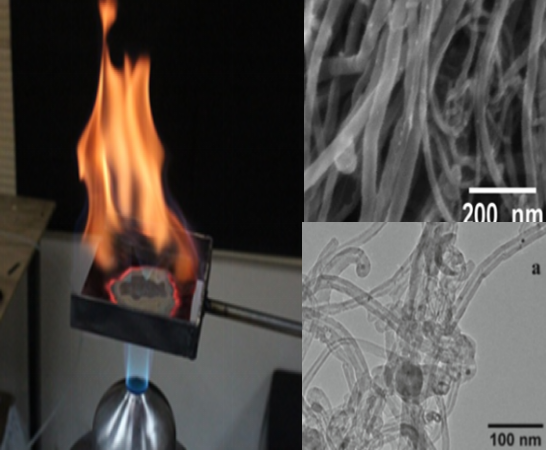Flame synthesis of nanomaterials production for energy application
Flame synthesis is an alternative method to produce nanomaterials with the advantage of short production time and industrial scalability. In our previous work, the technique of rich-premixed flame synthesis method to produce carbon nanotubes on a nickel catalyst-laden substrate. The growth mechanism of the carbon nanotubes was explored, while the yield, morphology and quality of the carbon-based nanotubes were analysed. The produced carbon nanotubes can be used as materials for supercapacitor or electrode materials. We explore different flame types that can be used for nanomaterials, including substrate-based and spray flame pyrolysis methods. The materials are then tested for a wide range of energy-related applications, including, catalyst for biofuel production, sensor development, ammonia cracking, pollutant controls etc.

Rapid production of carbon nanotubes using flames (Materials Chemistry and Physics, 2017)
Publications
1. CT Chong, WH Tan, SL Lee, WWF Chong, SS Lam, A Valera-Medina, Morphology and growth of carbon nanotubes catalytically synthesised by premixed hydrocarbon-rich flames, Materials Chemistry and Physics, 197:246-255, 2017
2. C Zhang, B Tian, CT Chong, B Ding, L Fan, X Chang, S Hochgreb, Experimental study of thiophene and ferrocene in synthesis of single-walled carbon nanotubes in rich premixed hydrogen/air flames, Combustion and Flame, 238(13):111939, 2022
